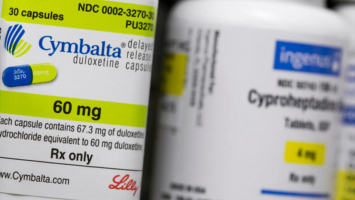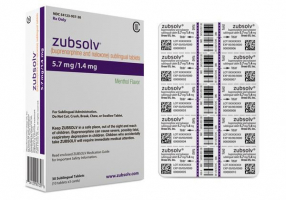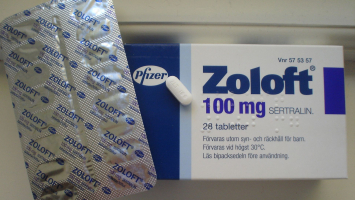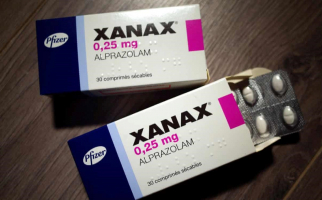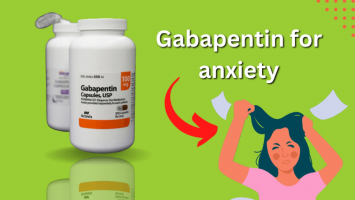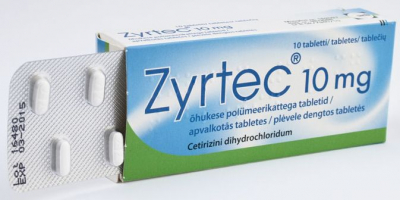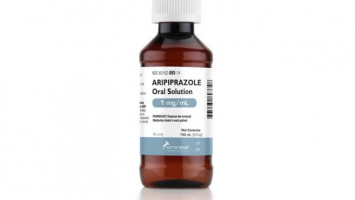Top 6 Things to Know About Hydrocodone
Hydrocodone is prescribed to treat severe pain. Hydrocodone is only prescribed to people who are expected to require medication to relieve severe pain ... read more...around-the-clock for an extended period of time and who are unable to be treated with other medications or treatments. Extended-release (long-acting) hydrocodone capsules or tablets should not be used to treat pain that can be controlled with as-needed medication. Hydrocodone belongs to the class of medications known as opiate (narcotic) analgesics. It works by altering how the brain and nervous system react to pain. Information about the use of hydrocodone alone is provided in this monograph. If you are taking a hydrocodone combination product, make sure to read the hydrocodone-combination monograph for information on all the ingredients and ask your doctor or pharmacist for more details.
-
Analgesic (pain-reliever) hydrocodone may be used to treat moderate to severe pain that does not respond to other, less potent painkillers.
To relieve pain, hydrocodone acts on receptors in the brain and spinal cord. It is a full opioid agonist that has a moderate level of mu-opioid receptor selectivity, though higher doses can also act on other opioid receptors. There is no ceiling effect for analgesia, like all full agonists, but higher dosages increase the risk of adverse effects like respiratory and CNS depression. Hydrocodone may release opioid-like substances that are already present in the body, though the exact mechanism by which it reduces pain is unknown. Hydrocodone is believed to work on the central cough reflex when used to treat coughing.
Hydrocodone is in the class of drugs known as narcotic analgesics. It is also known as an opioid analgesic.
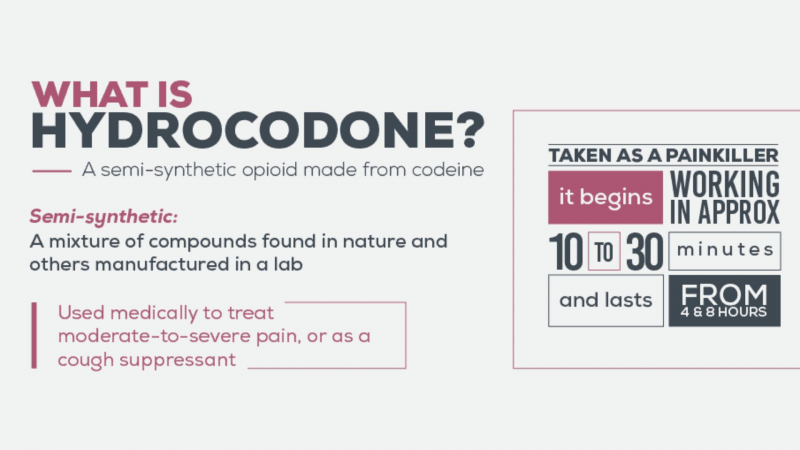
Northpoint Washington 
Addiction Resource -
Relieves moderate-to-severe acute and chronic pain that other pain relievers are unable to control.
Hydrocodone (alone) is only available in abuse-deterrent, branded, extended-release forms marketed as Hysingla ER, Vantrela ER, and Zohydro ER.
It has a lower risk of constipation, nausea, and vomiting than morphine. Hydrocodone, on the other hand, may be more constipating than oxycodone.
Those at increased risk of opiate overdosage or who have household members, including children, at risk of accidental ingestion or overdosage, may be prescribed with naloxone.
Hydrocodone is available in combination with other medications, such as acetaminophen and hydrocodone, and ibuprofen and hydrocodone. These combination medications are available in generic form.
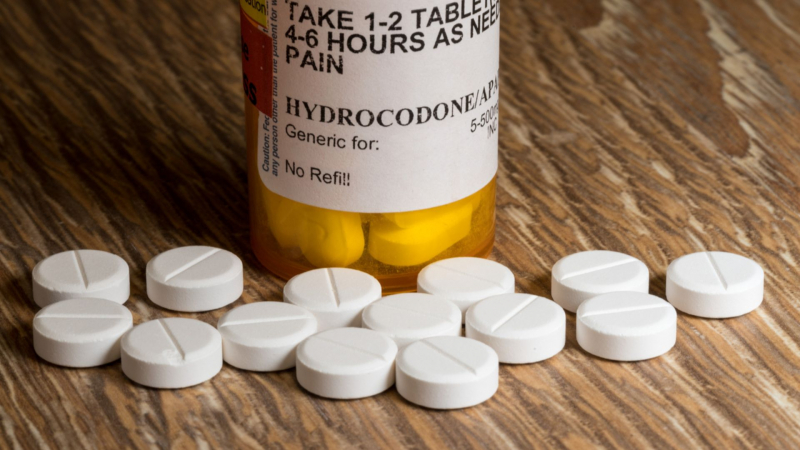
Bicycle Health 
HelpGuide.org -
If you are between the ages of 18 and 60, do not take any other medications, and have no other medical conditions, you are more likely to experience the following side effects:
- Dizziness or drowsiness that could make it difficult for a person to react quickly or drive or operate machinery. Stay away from alcohol.
- Constipation, nausea, and vomiting (although may be less likely than morphine to cause these effects).
- Before beginning extended-release hydrocodone tablets or capsules, all other 24/7 opiates should be stopped.
- According to the CDC, primary care physicians should weigh the risks and benefits of prescribing hydrocodone dosages greater than 50 mg/day and avoid dosages greater than 90 mg/day. Other experts advise consulting a pain management specialist before increasing the dosage. Increased dosages necessitate more frequent monitoring.
- Within 1 to 4 weeks of starting therapy or increasing the dosage, assess the benefits and risks.
- Drugs that are known to cause addiction and dependence may be abused or sought after by drug addicts. People with psychiatric disorders are at a higher risk. Evaluate patients thoroughly and identify risk factors for misuse, abuse, and addiction. Drug seekers may seek legitimate supplies of hydrocodone-containing products. One of the most commonly abused opioids in the United States is hydrocodone. Written treatment agreement plans (such as contracts), urine drug testing, and other risk assessment and monitoring tools are examples of risk management strategies.
- If the patient exhibits severe or persistent drug abuse or other abnormal drug-related behaviors, taper off and end hydrocodone treatment.
- Anyone who has developed a physical dependence on a hydrocodone-containing medication runs the risk of developing withdrawal syndrome, which includes symptoms like agitation, sweating, muscle aches, insomnia, irritability, and gastrointestinal complaints. Mothers who are physically reliant on hydrocodone will also have physically reliant offspring.
- Serious, life-threatening breathing problems may occur on rare occasions. Higher hydrocodone dosages, people with pre-existing respiratory disease, seniors or the frail, or those taking other medications that cause respiratory depression all increase the risk (such as benzodiazepines).
- In patients with renal impairment, start with a lower dose.
- Serotonin syndrome can also be caused by a drug interaction or overdosage. Mental status changes such as agitation, hallucinations, coma, or delirium; a rapid heart rate; dizziness; flushing; muscle tremor or rigidity; and stomach symptoms (including nausea, vomiting, and diarrhea) are all symptoms.
- Children are particularly vulnerable to hydrocodone's side effects. A single dose is fatal. Give patients instructions on how to keep all of their medications out of the reach of children and pets.
- People who have recently used monoamine oxidase inhibitors, pre-existing respiratory depression, respiratory disease, seizure disorders, head injuries, or gastrointestinal obstruction may not be a good fit for this medication.
- Prolonged opiate use during pregnancy can cause neonatal withdrawal syndrome, which can be life-threatening. Has a low risk of causing birth defects such as heart defects, spina bifida, and gastroschisis. Use in late pregnancy can result in respiratory depression in the newborn. Opiate concentrations in breast milk have been reported to be low, and either nursing or the drug should be stopped.
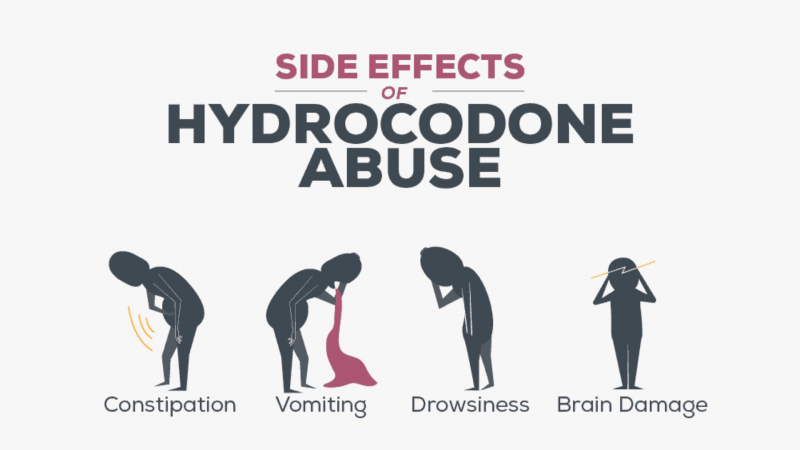
Northpoint Washington 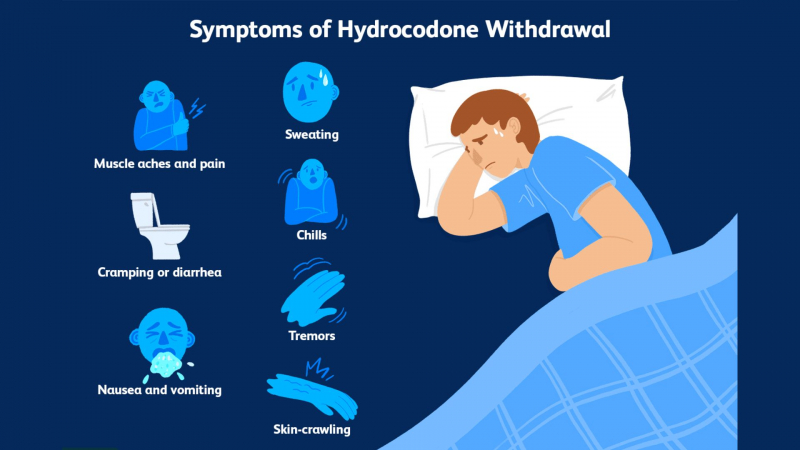
Verywell Mind -
Hydrocodone is available as an extended-release (long-acting) capsule and an extended-release (long-acting) tablet for oral administration. The extended-release capsule should be taken every 12 hours. Typically, the extended-release tablet is taken once daily. Every day, take hydrocodone at the same time(s). Follow the instructions on your prescription label exactly, and ask your doctor or pharmacist to explain any parts you don't understand. Follow your doctor's instructions exactly.
Take the extended-release capsules or tablets one at a time, with plenty of water. As soon as you put a capsule or tablet in your mouth, swallow it. Do not soak, wet, or lick the extended-release tablets before swallowing them.
In order to control your pain, your doctor will likely start you on a low dose of hydrocodone and gradually increase it, not more than once every 3 to 7 days. After taking hydrocodone for a while, your body might get accustomed to the drug. If this occurs, your doctor might increase the dosage of hydrocodone you're taking or might suggest another drug to help manage your pain. Discuss your feelings regarding your hydrocodone treatment with your doctor.
Do not stop taking hydrocodone without first consulting your doctor. Restlessness, teary eyes, runny nose, yawning, sweating, chills, hair standing on end, muscle pain, widened pupils (black circles in the middle of the eyes), irritability, anxiety, back or joint pain, weakness, stomach cramps, difficulty falling or staying asleep, nausea, loss of appetite, vomiting, diarrhea, fast breathing, or fast heartbeat may occur if you suddenly stop taking hydrocodone. Your doctor will most likely gradually reduce your dose.
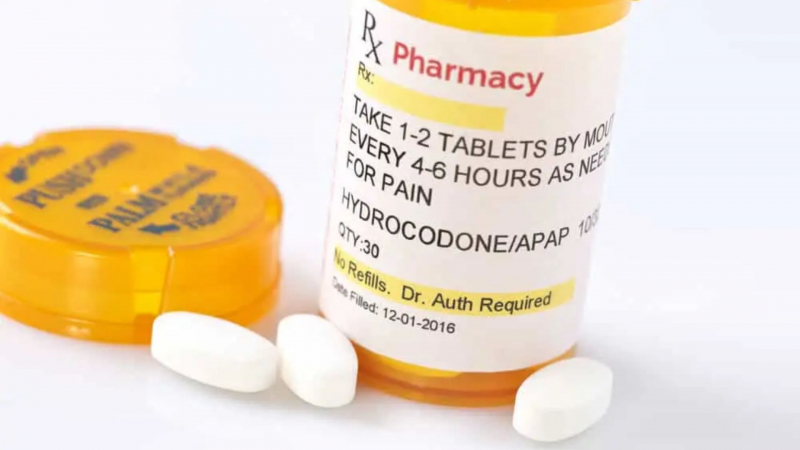
Legacy Healing 
Burt's Pharmacy and Compounding Lab -
Hysingla ER takes 6 to 30 hours to peak after oral administration, Vantrela ER takes 8 hours, and Zohydro R takes 5 hours.
Hydrocodone is metabolized by hepatic enzymes CYP2D6 to hydromorphone, which is the main metabolite of hydrocodone and has a 10 to 33-fold higher binding affinity (in some cases up to a 100-fold higher binding affinity) for the mu receptor than hydrocodone. Other hepatic enzymes are involved in the elimination of hydrocodone that has been metabolized.
Because CYP2D6 is genetically polymorphic, there may be a wide interindividual variation in how people respond to hydrocodone.
One dose of Hysingla ER is effective for 24 hours, whereas one dose of Vantrela ER or Zohydro ER is effective for 12 hours.
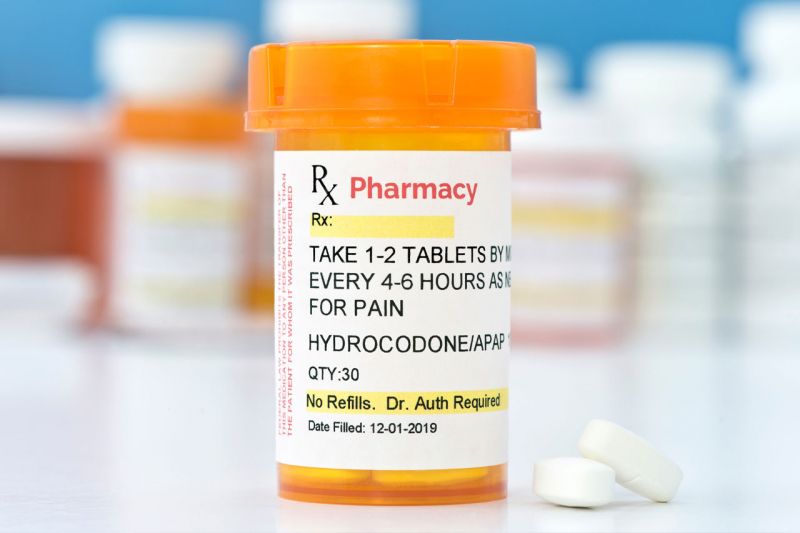
Banyan Treatment Center 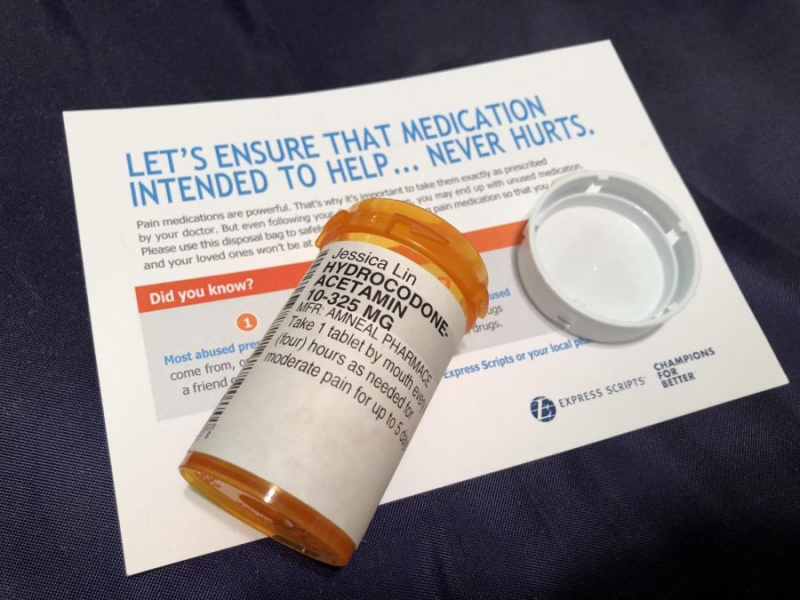
Upstream News -
When combined with hydrocodone, certain medications may lessen its effects, shorten their duration, cause more side effects, or have no effect at all. Even though it is not always necessary to stop taking one of the drugs, sometimes there is an interaction between two drugs. Consult your doctor to learn how to handle drug interactions.
Typical drugs with which hydrocodone may interact are:
- antibiotics, such as erythromycin
- anticholinergics, such as benztropine (may increase the risk of urinary retention or severe constipation)
- antidepressants, such as tricyclic antidepressants (eg, amitriptyline), monoamine oxidase inhibitors (eg, isocarboxazid, phenelzine, and tranylcypromine), or SSRIs (eg, fluoxetine, sertraline). May increase the risk of serotonin syndrome
- antiemetics, such as dolasetron, granisetron, or ondansetron
- antifungal agents, such as itraconazole and ketoconazole
- anticonvulsants, such as carbamazepine, lamotrigine, phenytoin, phenobarbital, or primidone
- antimigraine agents such as sumatriptan
- antipsychotics (such as butyrophenones, phenothiazines, or thioxanthenes) and atypical antipsychotics (eg, olanzapine, quetiapine, ziprasidone)
- aprepitant
- azelastine
- any medication that may cause drowsiness, such as amphetamines, benzodiazepines (eg, diazepam, lorazepam), first-generation antihistamines (such as doxylamine or promethazine), metoclopramide, or opioids (such as codeine, morphine)
- buprenorphine
- buspirone
- cannabidiol
- cannabis
- desmopressin
- dextromethorphan
- diuretics, such as furosemide
- fusidic acid
- gastrointestinal agents, such as metoclopramide
- HIV medications such as ritonavir
- kava kava
- ketoconazole
- magnesium sulfate
- mifepristone
- muscle relaxants, such as cyclobenzaprine
- naltrexone
- other medications that are CYP3A4 or CYP2D6 inhibitors or inducers
- pentazocine
- rifampin
- sedative-hypnotic agents such as zolpidem or eszopiclone.
While taking hydrocodone, avoid drinking alcohol or using illegal or recreational drugs.
It should be noted that this list is not exhaustive and only includes common medications that may interact with hydrocodone. For a complete list of interactions, consult the hydrocodone prescribing information.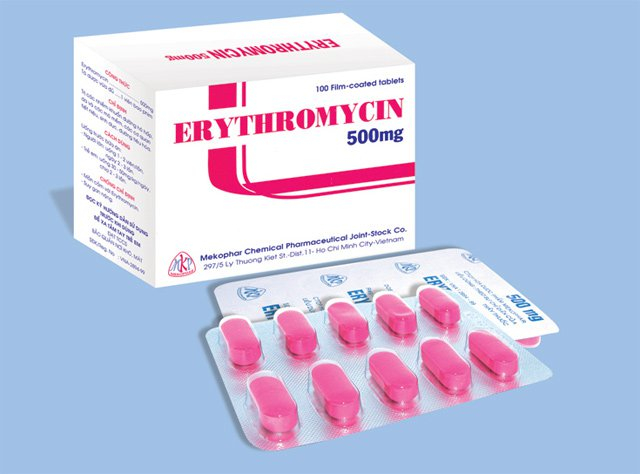
Vinmec 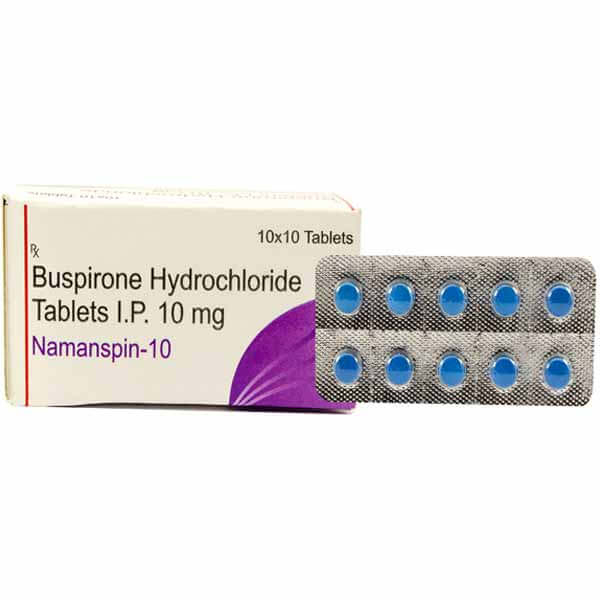
Naman Pharma Drugs











